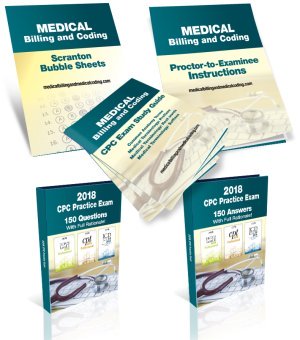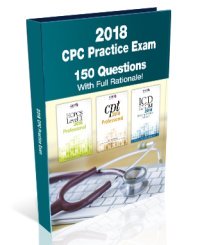My provider performed an axillary lymph node dissection of levels 1-3 NOT in conjunction with mastectomy.
Does code 38745 include the level 3 nodes? Coding Companion lists only levels 1 & 2. NCCI edits allow the use
of 38525-59 for the level 3 nodes but with it being all on one side with one incision is it appropriate to do this??
If not would it be appropriate to append -22?
Laureen shows you her proprietary “Bubbling and Highlighting Technique”
Download your Free copy of my "Medical Coding From Home Ebook" at the top right corner of this page 2018 CPC Practice Exam Answer Key 150 Questions With Full Rationale (HCPCS, ICD-9-CM, ICD-10, CPT Codes) Click here for more sample CPC practice exam questions with Full Rationale Answers Click here for more sample CPC practice exam questions and answers with full rationaleTag Archives: lymph
ultrasound guided ethanol injections lymph nodes/solid masses
Coding a Partial Mastectomy with SNB and axillary lymph node dissection.
PREOPERATIVE DIAGNOSIS: Left breast carcinoma.
POSTOPERATIVE DIAGNOSIS: Left breast carcinoma.
PROCEDURES PERFORMED:
1.Left partial mastectomy with ultrasound localization.
2.Left axillary sentinel lymph node biopsy.
3.Left completion axillary lymph node dissection.
ANESTHESIA: MAC.
ANESTHESIOLOGIST: XXXX
SURGEON: XXXX
ASSISTANT: XXX
INDICATIONS FOR PROCEDURE: 53-year-old female with a newly diagnosed left breast carcinoma. She has a clinically normal axilla. She is undergoing a partial mastectomy with axillary sentinel node sampling at this time. Risks and benefits were explained including bleeding, infection, tumor recurrence, need for additional margin resection, arm edema, nerve injury, and indications for completion axillary lymph node dissection. All questions were answered. She desires to proceed. A surgical assistant is standard, necessary, and customary for the safe performance of this procedure.
DESCRIPTION OF PROCEDURE: Monitored anesthesia care was started upon returning from lymphoscintigraphy. Intraoperative ultrasound was utilized to identify the 3 o’clock tumor. The breast and axilla were infiltrated with 1% lidocaine and 0.5% Marcaine. The axilla was initially opened. Multiple hot lymph nodes were present. The highest activity was noted to be 20,000 units on the gamma counter. Subsequent nodes measured 2000 units with background activity all being negligible less than 200 units. The identified hot lymph nodes were all dissected using electrocautery and sent for frozen sectioning. A total of five hot lymph nodes were present, two of which were grossly positive for metastatic breast carcinoma. The axilla was subsequently extended allowing for completion dissection to be performed. The axillary vein was identified and skeletonized inferiorly. The long thoracic nerve and thoracodorsal nerves were both identified and preserved. The intercostal brachial nerve was diminutive in size and difficult to separate from the surrounding fibrofatty tissue. This was intentionally divided during the dissection. The axillary contents were peeled inferiorly and sent for permanent sectioning. Upon completion, the long thoracic and thoracodorsal nerves were confirmed intact and functional. The axillary vein was noted to be hemostatic. The axilla was closed in layer over a #10 flat Jackson-Pratt drain followed by Dermabond.
The breast was incised through a 3 o’clock periareolar incision. Ultrasound was used to guide the dissection. Using electrocautery, a large core of tissue was taken enveloping the entire mass. This was excised ex vivo. Subsequent Ultrasound confirmed the mass centrally located with multiple centimeters of normal surrounding breast parenchyma with the clip easily identified centrally. Satisfactory hemostasis was assured throughout the breast cavity. Additional portions of all six margins were obtained and sent for permanent sampling. The breast had been completely skeletonized from beneath the skin leaving no additional breast tissue to be had at this location. Portions of the pectoralis major fascia were also included. Hemostasis was assured. The defect was closed in layers with absorbable suture followed by Dermabond. Multiple clips had been placed circumferentially around the cavity to allow consideration for postoperative partial breast radiation. The patient was taken to Recovery awake and uneventfully.
needle biopsy of a mediastinal lymph node?
How would you code for a core needle biopsy of a mediastinal lymph node? The report stated the biopsy was challenging because the lymph node was close to the heart and pulmonary artery, so it definitely was not superficial





